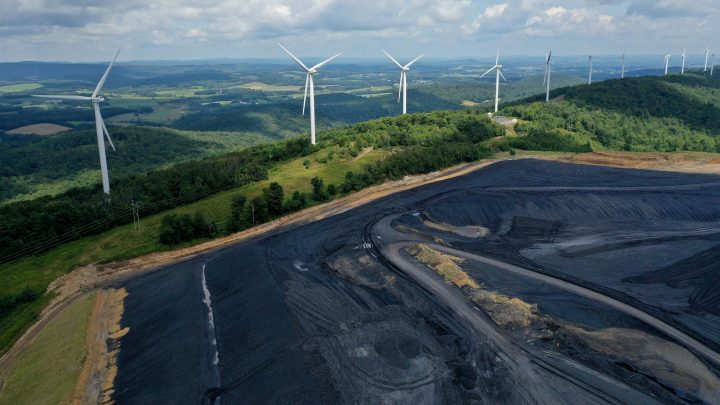
U.S. carbon emissions fell in 2023, mainly thanks to natural gas displacing coal at power plants
U.S. carbon emissions fell in 2023, mainly thanks to natural gas displacing coal at power plants

U.S. carbon emissions declined by 1.8% in 2023, according to new data out this week from BloombergNEF and the Business Council for Sustainable Energy. But there’s still a long way to go to meet the country’s climate goals.
Most of the reduction in emissions is coming from one place, per David Victor, a professor of innovation and public policy at UC San Diego: “The power sector is doing almost all the work.”
It’s been doing that by generating electricity with a different fossil fuel. “The really big impact has been gas competing with coal,” he said.
Gas has gotten really cheap, so power companies are burning it instead of coal.
But renewables — especially solar, wind, and battery storage — are playing larger roles in our energy mix too. They’re also not as pricey as they used to be, said Melissa Lott, a professor at Columbia University’s Climate School.
“It’s also just economics,” she said. “These technologies are cheap, these fuels are cheap, and so we’re using more of them.”
Policy decisions to use cleaner energy — at the federal, state and local levels — are a factor as well, Lott added. That includes recent policies, like the Inflation Reduction Act, but older ones too.
“What we’re seeing, I find really encouraging, in that actions we’ve taken over the last decade — we’re starting to see the impacts of those things,” she said.
But power plant emissions are only one slice of the pie; the biggest slice is transportation. And emissions from cars, trucks, planes and trains actually went up 0.5% last year.
“There’s an increase in flights, there’s an increase in truck driving, but then also an increase in personal transport,” said Sanya Carley, a professor at the University of Pennsylvania.
Decarbonizing millions of personal vehicles is a lot harder than cutting emissions from the country’s thousands of power plants, she said.
“If you think about all of the vehicle fleets, they’re owned by so many more people, it’s a much more decentralized kind of decision-making,” Carley said.
But even though transportation emissions rose closer to pre-pandemic levels, they didn’t reach them, the report found. Lisa Jacobson takes that as a win. She’s president of the Business Council for Sustainable Energy, which co-sponsored the report.
“And the fact that we didn’t do that is a signal that we have more efficient vehicles, and we have more electric vehicles on the market for consumers,” she said.
Getting even more of them on the road will take time and money, she said. However, tax breaks and other policies are already spurring investment.
“We can expect that investments we’re making today are going to pay off in terms of emissions reductions into the future,” she said.
We’ll need to speed up those reductions, Jacobson added, to reach the country’s goals and prevent the worst effects of climate change.
There’s a lot happening in the world. Through it all, Marketplace is here for you.
You rely on Marketplace to break down the world’s events and tell you how it affects you in a fact-based, approachable way. We rely on your financial support to keep making that possible.
Your donation today powers the independent journalism that you rely on. For just $5/month, you can help sustain Marketplace so we can keep reporting on the things that matter to you.












